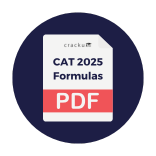SSC JE Mechanical Engineering 24th Jan 2018 Shift-2
For the following questions answer them individually
SSC JE Mechanical Engineering 24th Jan 2018 Shift-2 - Question 141
What is the other name for Diesel Cycle?
SSC JE Mechanical Engineering 24th Jan 2018 Shift-2 - Question 142
If a Carnot engine rejects ¼ of the heat from the reservoir, what is the efficiency of Carnot engine?
SSC JE Mechanical Engineering 24th Jan 2018 Shift-2 - Question 143
One kg of air (R=287 J/kg-K) goes through an irreversible process between two equilibrium state 1 ($$30^\circ C$$, 1.2 m$$^3$$) and state 2 ($$30^\circ C$$, 0.8 m$$^3$$). What is the change in entropy (in J/kg-K)?
SSC JE Mechanical Engineering 24th Jan 2018 Shift-2 - Question 144
A Carnot engine operates between temperature 1000 K and 400 K. The heat rejected by the first Carnot engine is used by the second Carnot engine, whose sink temperature is 200 K. If the net heat absorbed by the first Carnot engine is 200 MJ. What is the heat rejected (in MJ) by the second Carnot engine?
SSC JE Mechanical Engineering 24th Jan 2018 Shift-2 - Question 145
Which of the following gas is used as a working medium in air standard cycle?
SSC JE Mechanical Engineering 24th Jan 2018 Shift-2 - Question 146
An engine based on a standard Otto cycle is operating with air as an medium with specific heat of 1.4 has a cylinder diameter of 5 cm and stroke length of 7.5 cm. If the clearance volume is 88.15 cc and the heat supplied per kg of air per cycle is 900 kJ/kg, then work output (in kJ) per kg of air is?
SSC JE Mechanical Engineering 24th Jan 2018 Shift-2 - Question 147
A closed system contains saturated liquid ammonia at $$10^\circ C$$. The mass of ammonia is 5 kg. The amount of heat that is required to convert all thesaturated liquid to vapour at constant pressure is 16.2 MJ. If the entropy of saturated liquid is 0.88 kJ/kg-K, what is the entropy (kJ/kg-K) of saturated vapour process without heat transfer?
SSC JE Mechanical Engineering 24th Jan 2018 Shift-2 - Question 148
Why the study of air standard cycle is proposed?
SSC JE Mechanical Engineering 24th Jan 2018 Shift-2 - Question 149
How is the rate of burning of fuel controlled in the compression ignition engine?
SSC JE Mechanical Engineering 24th Jan 2018 Shift-2 - Question 150
Which denoted path is followed by the Diesel Cycle in the below P-V diagram?



